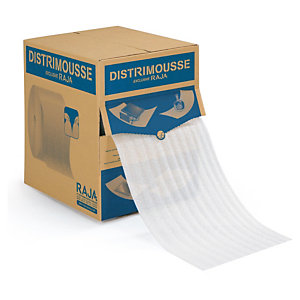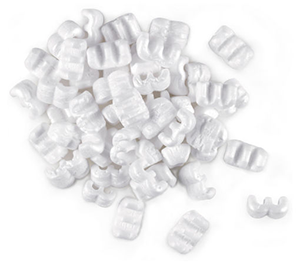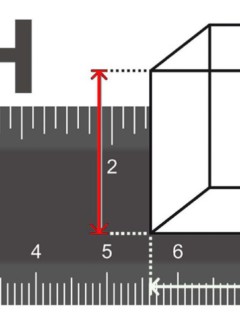Always satisfied customers: The holy grail, right? Good customer experience is something you have to work at! Good packaging appeals to all the senses and is the basis of an exciting and enjoyable unboxing experience. So if you sell your goods via e-commerce, you also need to offer your customers a high-quality delivery to turn them into satisfied buyers. hen protecting your products well, optimising your logistics costs and increasing your customer satisfaction through personalisation: these are the keys to successful e-commerce delivery! Find out how in this article.
Shipping optimisation in e-commerce: What are the challenges?
E- commerce – delivery has to face three major challenges:
Protect the goods
If you sell online, you have to transport the goods from the warehouse to the customer. To do this, you must choose packaging that is adapted to the shape, texture and sensitivity of your products to ensure optimal delivery. To do this, you must remember in particular to equip your packaging with suitable protective or cushioning elements.
Improve the customer experience
The customer is looking forward to his order. He or she is therefore eagerly awaiting the delivery and will also remember receiving his or her parcel. Difficulties in delivery cloud the consumer’s opinion even before receiving the goods and (unconsciously) influence the evaluation of their quality.
Optimise your logistics costs
The price of delivery can be high compared to the final cost of your items. Comparing quotes from multiple carriers or better managing the flow of goods can help you optimise the cost of delivery.
Approach #1: Offer real delivery flexibility
Offering different delivery methods adds real value to the customer and influences the experience your customers have with your brand. Consumers choose the type of delivery that suits their needs. After all, as different as the circumstances of online shoppers are, so are their delivery preferences.
These three delivery types are suitable for e-commerce businesses:
- Direct to home: Sure, associated with higher costs, but the most popular – and convenient – way of delivery. However, this type of delivery can also be problematic. If no one is at home at the time of delivery, the delivery is left with neighbours or parked around the house with the prior consent of the recipient – usually freely accessible to the weather or even strangers. If there is no permission to leave the parcel, it is taken away again and – this varies from delivery service to delivery service – one or more further attempts are made to deliver it. This can take time. And after the last unsuccessful delivery attempt, the delivery goes back to the sender.
- Click and Collect: There are no delivery charges, making the purchase cheaper for the customer. In addition, the buyer gets a high degree of flexibility and plannability – the customer chooses the appropriate time (within shop opening hours) himself. More and more retailers are offering this option and, during the lockdown period, it was also a good way for retailers to generate sales. However, it requires certain prerequisites in terms of processes and premises. Not every warehouse is suitable for this type of on-site “goods issue”.
- Pick-up in a parcel shop/packing station: Another option: the goods are deposited at a pick-up station. Here the customer also freely chooses the time of collection, e.g. at a Packstation also around the clock with the help of a pin code. For the sender, this option also offers a certain degree of plannability: the parcel is basically sent out normally.
This is how relevant flexibility in delivery is:
No matter what delivery options you want to offer: Increasing delivery flexibility also means increasing customer satisfaction. Choose flexible offers where the customer can change the delivery date or address and track their parcel in real time.
The survey results of the E-Commerce Delivery Compass 2021/2022 also show that the choice of shipping or delivery methods offered has a major influence on the purchase decision of your customers:
- 68% abandon their purchase before completing it in the checkout because the shipping costs are too high for them.
- For 78%, the speed of delivery is the most important factor in deciding for or against a particular online shop.
- 71% say that flexible delivery options are relevant to them.
Approach #2: Clearly communicate your delivery conditions
Include all information related to delivery in your general terms and conditions of sale. We also recommend that you display the most important delivery information again at the time of payment: Price, deadlines, carrier, return policy, etc.
All this helps to be as transparent as possible before the purchase. This way you gain the customer’s trust and make your delivery a real selling point!
Approach #3: Make unpacking your parcels part of the customer experience
Those who are rewarded with positive emotions when opening their package will inevitably be more inclined to choose you again than a competitor. Unboxing is therefore a crucial step in creating an optimal customer experience.
Let’s create the “wow” effect …
- With appropriate packaging in terms of size and shape, cushioning and protection
- Thanks to environmentally conscious packaging: recycled or recyclable materials
- Create personalised accompanying documents. This could be a nice envelope containing the invoice, a voucher or discount on a future purchase, a small extract from positive customer reviews and possibly a call for a review
- By details that make all the difference: A thank you message or goodies
Approach #4: Offer responsible delivery methods
Ecological responsibility is a key concern for consumers and choosing environmentally friendly delivery methods is thus another plus point for maintaining your brand. Green delivery is possible in a number of ways:
- “Clean” delivery vehicles: hybrid or electric delivery trucks, trucks that run on natural gas for vehicles (NGV) or bio-gas to reduce your CO² emissions.
- Bicycle or cargo bike couriers: These zero-emission means of transport are suitable for delivery in the city and are ideal for delivering small parcels.
- Collaborativedelivery: Collaborative delivery allows you to hand over your customer’s parcel to private individuals who travel the distance for a fee.
- AutomaticLocker: The carrier deposits the parcel in an automatic locker that the customer can access at any time.
- Environmentally conscious transport companies: Many service providers are now committed to reducing their emissions by training their employees in more environmentally conscious driving or optimising the tyres of their fleets.
Approach #5: Wherever possible, implement delivery directly to the letterbox.
This is a real advantage in terms of customer experience: the customer does not have to go to the post office, as their package arrives directly at their home. For products whose size allows it, this option makes sense.
For practical implementation, letterbox-friendly packaging is essential. We offer various shipping boxes for letterbox delivery. They are available in different sizes and have a practical and secure adhesive closure.
Approach #6: Facilitate customer returns
The return option offered by your business is an essential part of the customer experience.
Successful customer returns cannot be achieved without establishing a precise and effective policy:
- A well-trained and easily accessible after-sales service
- Logistics centre capable of receiving returns
- Well-defined time period within which a return is allowed
- Highlighting valid reasons for returns
- Refund policy
- Detailed information on the complete customer return process
Returning orders is facilitated by the use of two-way packaging. The special feature? The double adhesive strip, which allows for easy resealing, and the stability of the packaging, which makes it possible to protect the products both on the way there and on the way back.
Would you like to know how you can reduce your returns rate? Valuable tips on this in the blog: Returns management: how to reduce your returns rate
Go directly to a selection of products that make returns management easier for you? In the shop: Improve your returns management with the right packaging!
Receiving the package is a crucial step in the customer experience that needs to be taken care of in order to gain credibility. And thanks to these few tips, you will succeed!
















